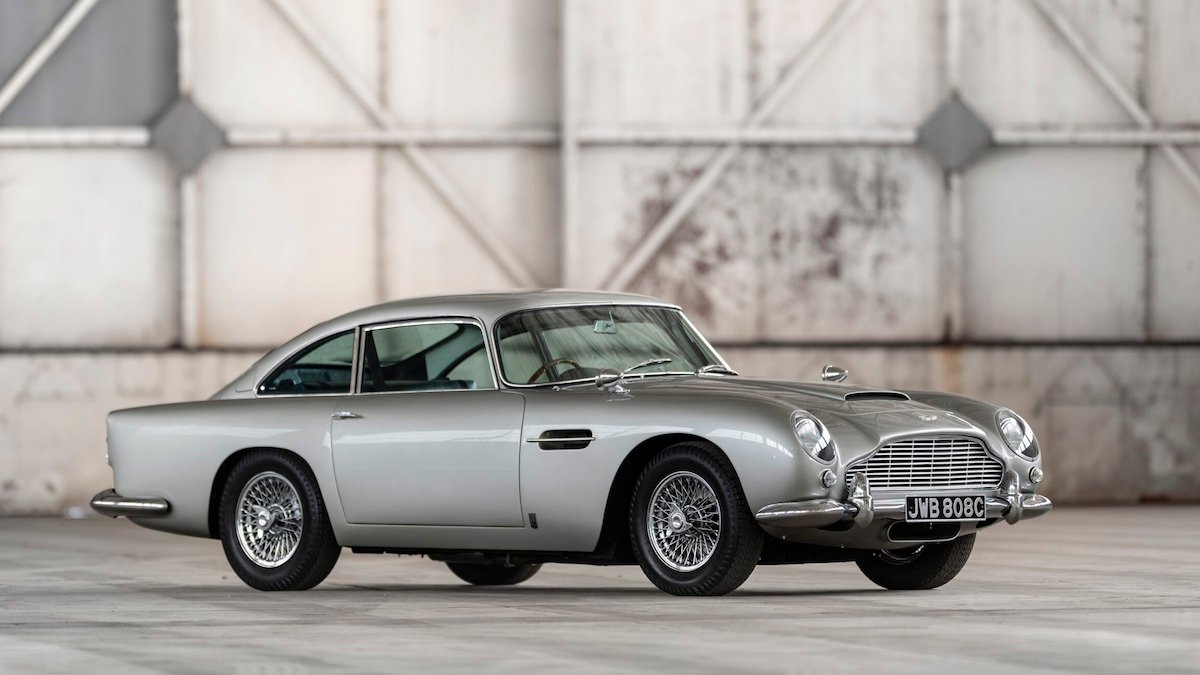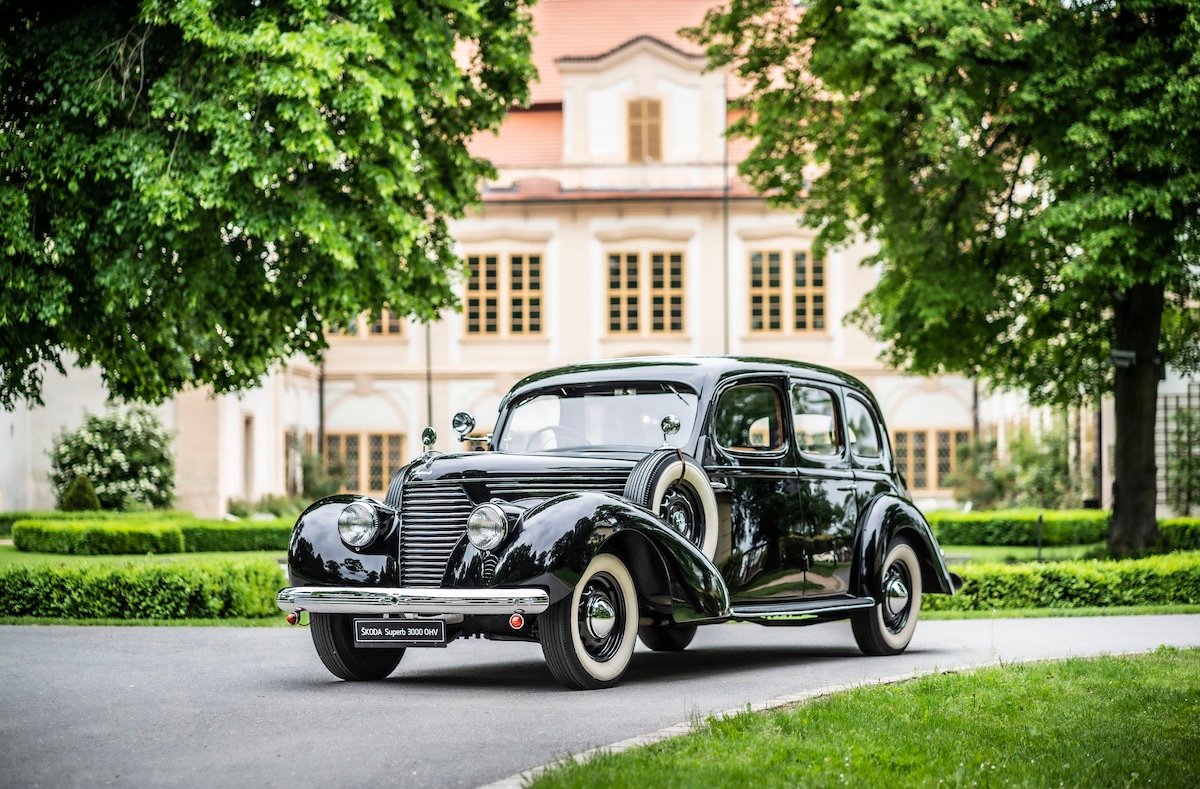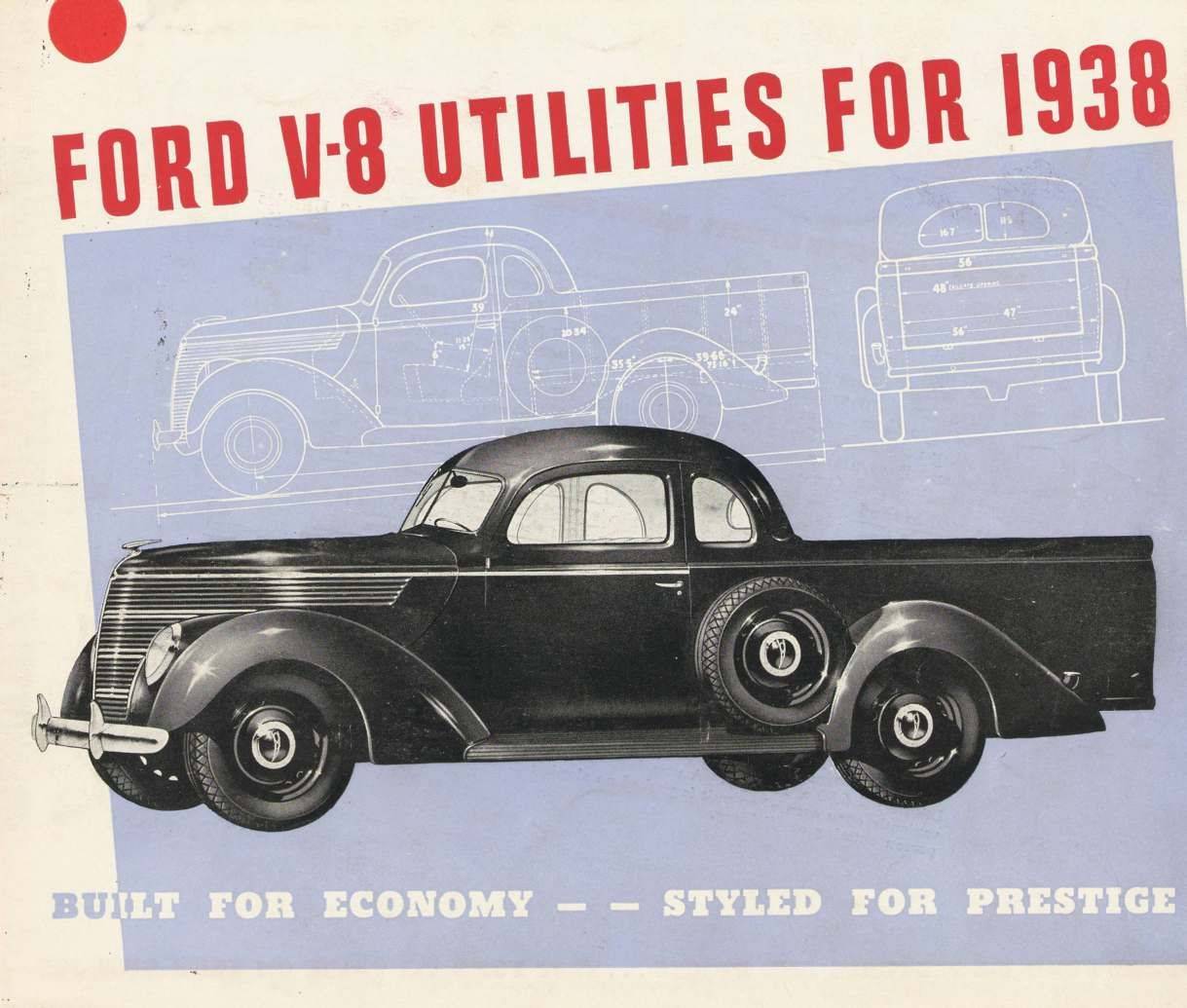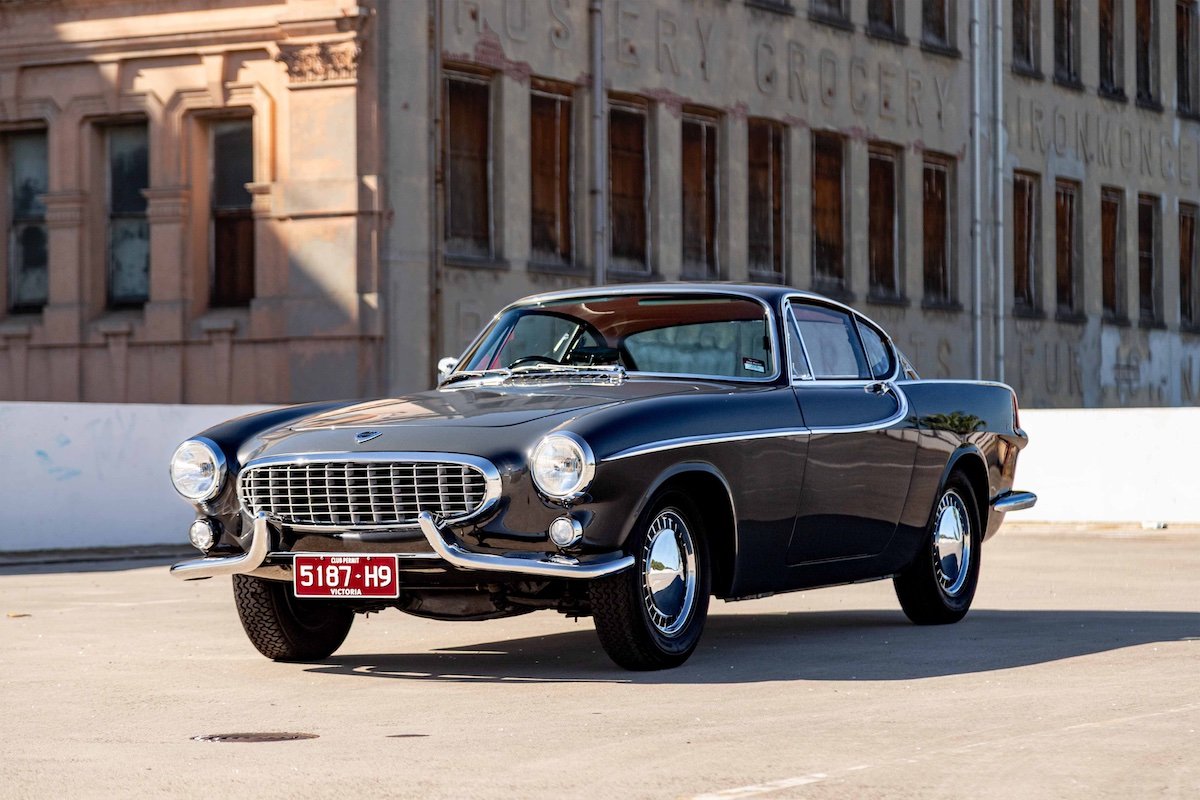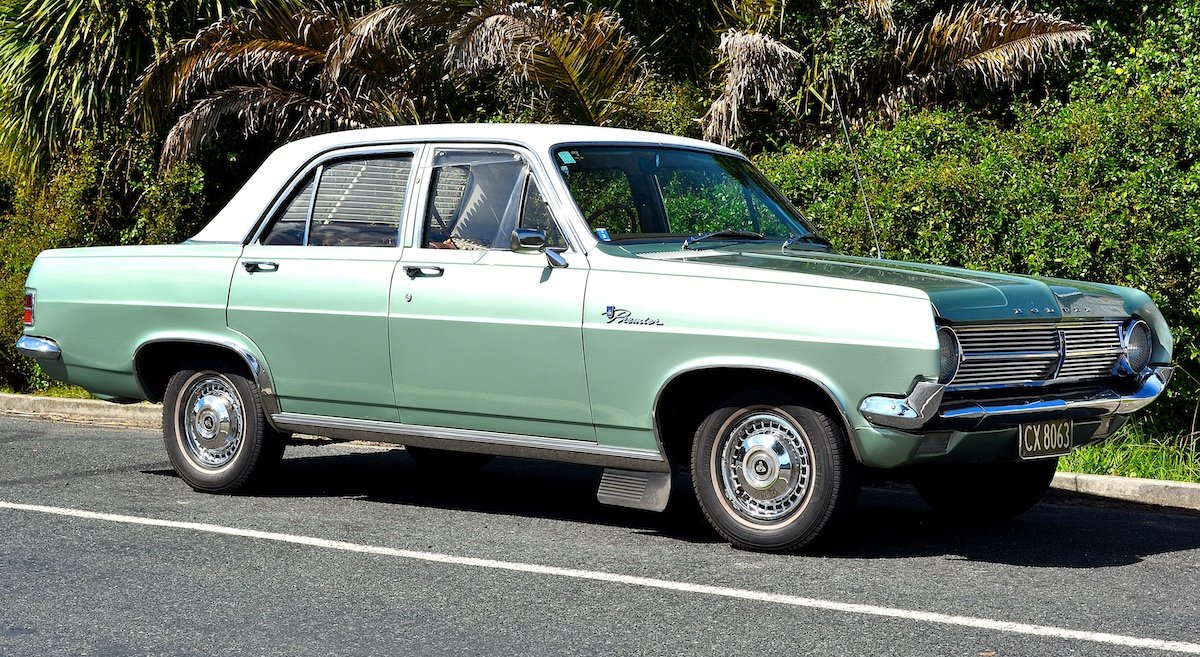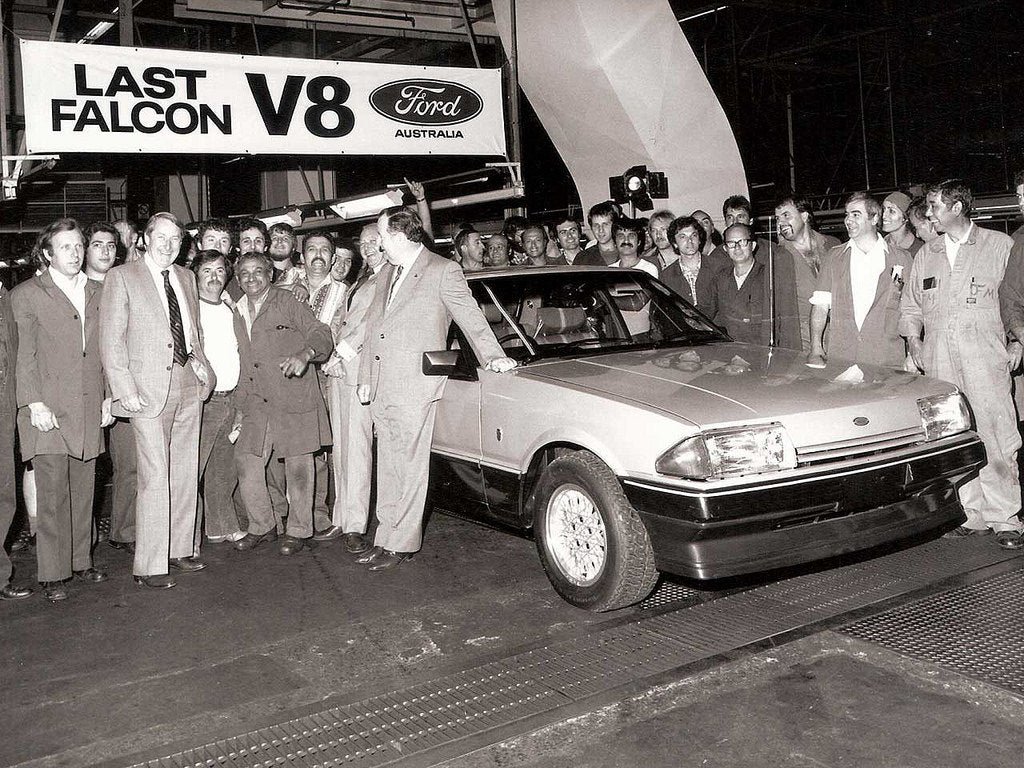
The Last Ford Falcon ESP V8 was a 5 speed manual - Image Ford Australia
Retro Rides market analyst tracks the performance of some of the most collectable Ford Falcons and Fairlanes of the past 40 years and chooses his top 10 investment grade models, all with capacity for further value growth.
During more than 50 years of Falcon production, Ford Australia had never been frightened of controversy.
News of the impending Phase IV GTHO created such political furore that not only did that car fail to materialise, but Australia’s entire muscle-car market went into politically-enforced hibernation.
Five years after that calamity came a famous victory followed by the launch of a limited-edition Cobra Hardtop. This was supposed to celebrate Ford’s 1-2 Bathurst 1000 win but was a ploy to clear 400 body shells that had been going rusty in a field. Today, some of the cars that survive are worth more than $250,000.
Betting against logic with its big XD-XF models earned Ford dominance of the early 1980s passenger car market. Then it bet again that lovers of performance cars weren’t going to miss their V8 engined Falcons and lost heavily.
A decade into the 21st Century, Ford offshoot FPV finally managed to recapture the spirit of earlier times and build a car that celebrated the days when many of this country’s best muscle machines wore Falcon badges.
Our market still brims with desirable Aussie Fords, some more affordable now than a few years ago when the company closed its factory doors and sparked a frenzy of demand. Here’s our selection of some of the most desirable and collectable.
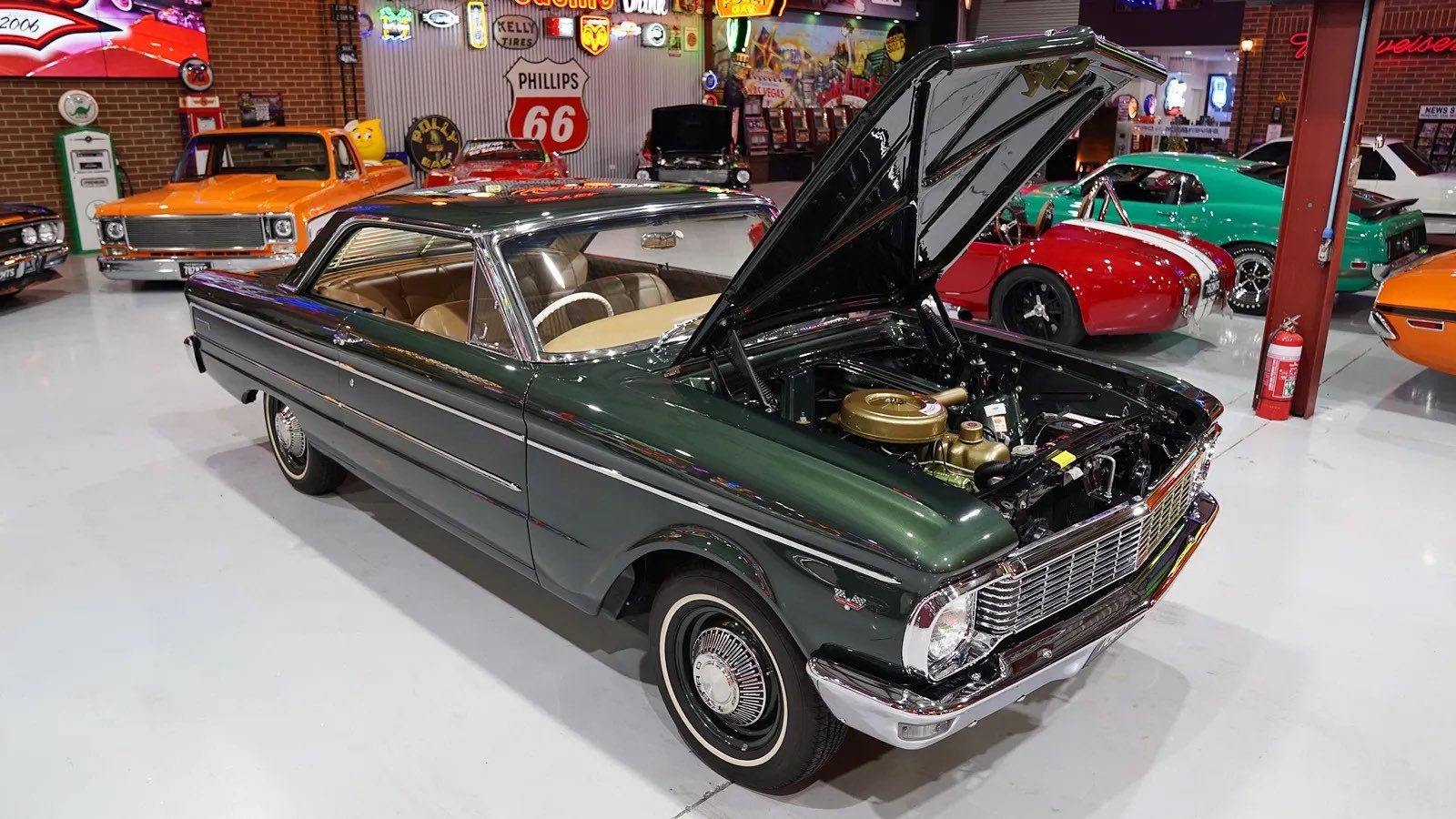
1966 Ford Falcon XP Coupe - Image Seven82Motors
FORD FALCON XM-XP FUTURA HARDTOP (1964-1966)
How Ford ditched two doors and added some class to the otherwise drab XM Falcon.
Using US-sourced parts mated to local sheet-metal, Ford Australia took a big risk when investing in this country’s first family-sized Hardtop.
The Hardtop appeared in 1964 as part of Ford’s XM Falcon series; available in Deluxe and better-equipped Futura trim. Engines were all six-cylinder with a choice of three-speed manual, or two and three-speed automatic transmissions. A 4.2-litre V8 conversion was available through Sydney-based drag racer Bill Warner but Ford was wary of adding a V8 version to its official lineup.
Additional body strengthening added to overall weight but also improved weight distribution, so Hardtops allegedly suffered less from understeer than four-door cars. Improved aerodynamics may have helped as well, with top speed from the 200 Pursuit Hardtop around 150km/h.
The Futura was hardly a luxurious car and certainly not the ‘Aussie Thunderbird’ imagined by some. Up front it had separate bucket seats in patterned vinyl and a heater. Externally there were full wheel covers with whitewall tyres and extra chrome.
After almost 60 years of use, those lengthy doors may have succumbed to gravity so make sure they close easily and don’t need the hinge mounts replaced. Rust will be most destructive in those elongated rear quarter panels, around window apertures and spring attachment points.
Some Hardtops have been converted to V8 power and work well providing the brakes and suspension have also been uprated to cope with extra weight ahead of the windscreen. The cooling system needs improvement to avoid overheating problems.
Uprating the suspension and adding disc front brakes as some owners have done to six-cylinder cars will improve driveability without affecting appearance.
Values for Hardtop Futuras in outstanding condition have topped $75,000, with average examples still below $50,000.
TIMELINE
1985 $8500 1995 $10,000 2005 $14,500 2010 $18,500 2014 $25,000 2019
$38,000 2024 $62,500
INVESTMENT RATING 6.5/10
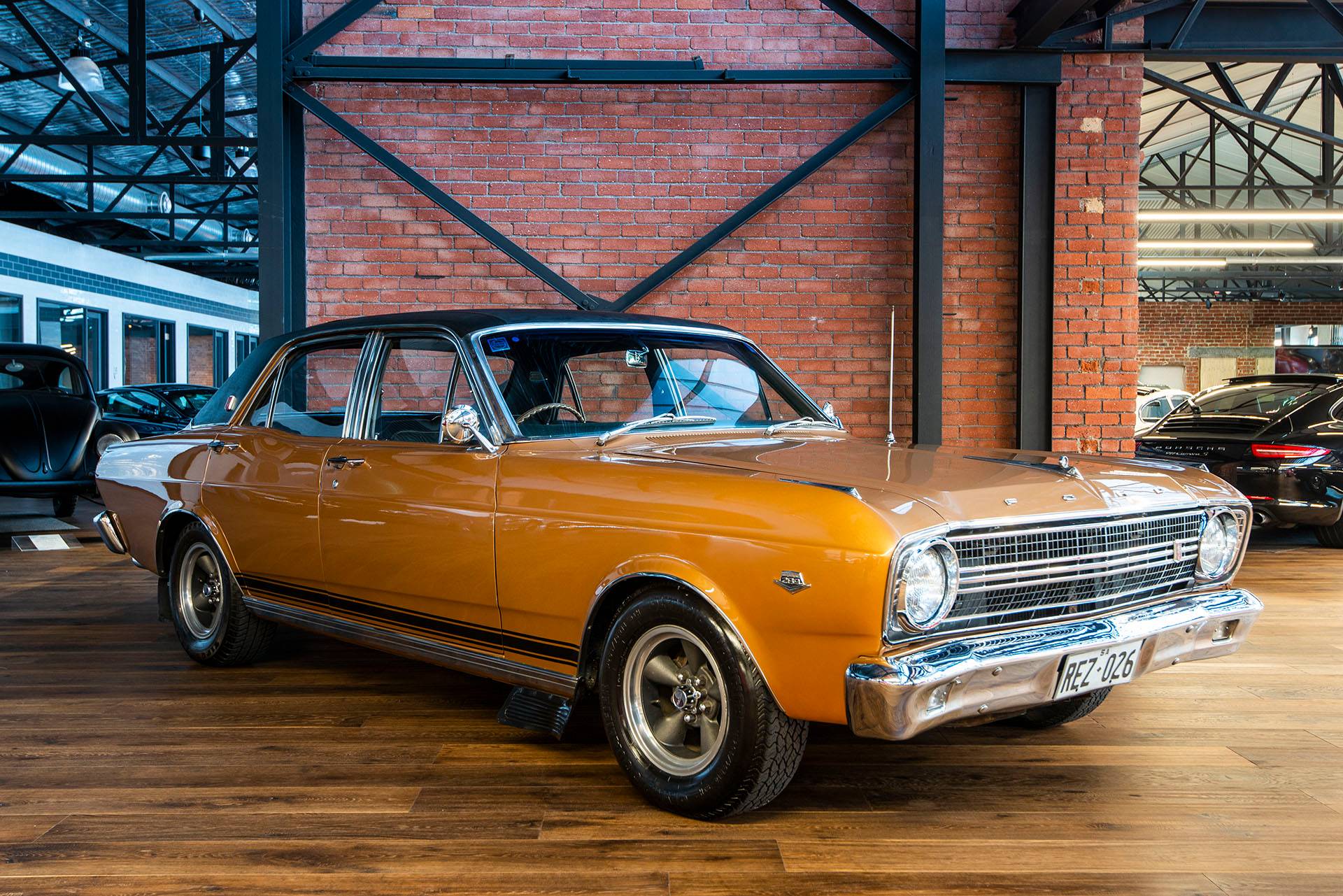
Ford Falcon XR GT - Image Richmonds
XR FALCON GT (1967-1968)
How the Mustang-inspired XR Falcon introduced V8 power and the GT badge to the Ford Falcon.
Ford Australia in October 1966 announced its longer, Mustang-inspired XR Falcon with an optional 4.7-litre V8. Then in April 1967 it added a gold painted GT version with a more powerful version of the V8, four-speed manual gearbox and front disc-brakes as standard.
In October 1967, after a day-long battle with two Alfa Romeos, a pair of XR GTs finished the Bathurst 500 a minute ahead of the Alfas and within a minute of each other, only to have the finishing order reversed due to a timing error.
It didn’t matter though because a Ford had still won the most important motor race of its era and while only 596 XR GTs were ever sold, that Bathurst victory would generate thousands more sales of XR models.
Inside the GT was all black and in keeping with the muscle car style of its time. The steering wheel was heavily chromed and obviously American, the gear selector the same as that fitted to four-speed Mustang GTs.
Those first XR GTs did make some money for people who bought them new, quadrupling in value by the mid-1980s. Prices then slumped before recovering during the 2004-07 Muscle Car Boom, although not to the degree experienced by later XW-XY GTs.
More desirable than basic GT Gold cars are the white-and-green-painted racers that battled for the 1967 Bathurst 500 win, and the survivors from a batch of eight GTs painted silver and used by race sponsor Gallaher Tobacco.
Four of these latter cars are thought to exist, including one offered for sale several years ago at $395,000. GT Gold cars in original condition but without race history occasionally reach $200,000.
TIMELINE
1985 $18,000 1995 $14,000 2005 $37,500 2010 $70,000 2014 $62,000 2019
$165,000 2024 $170,000
INVESTMENT RATING 7/10
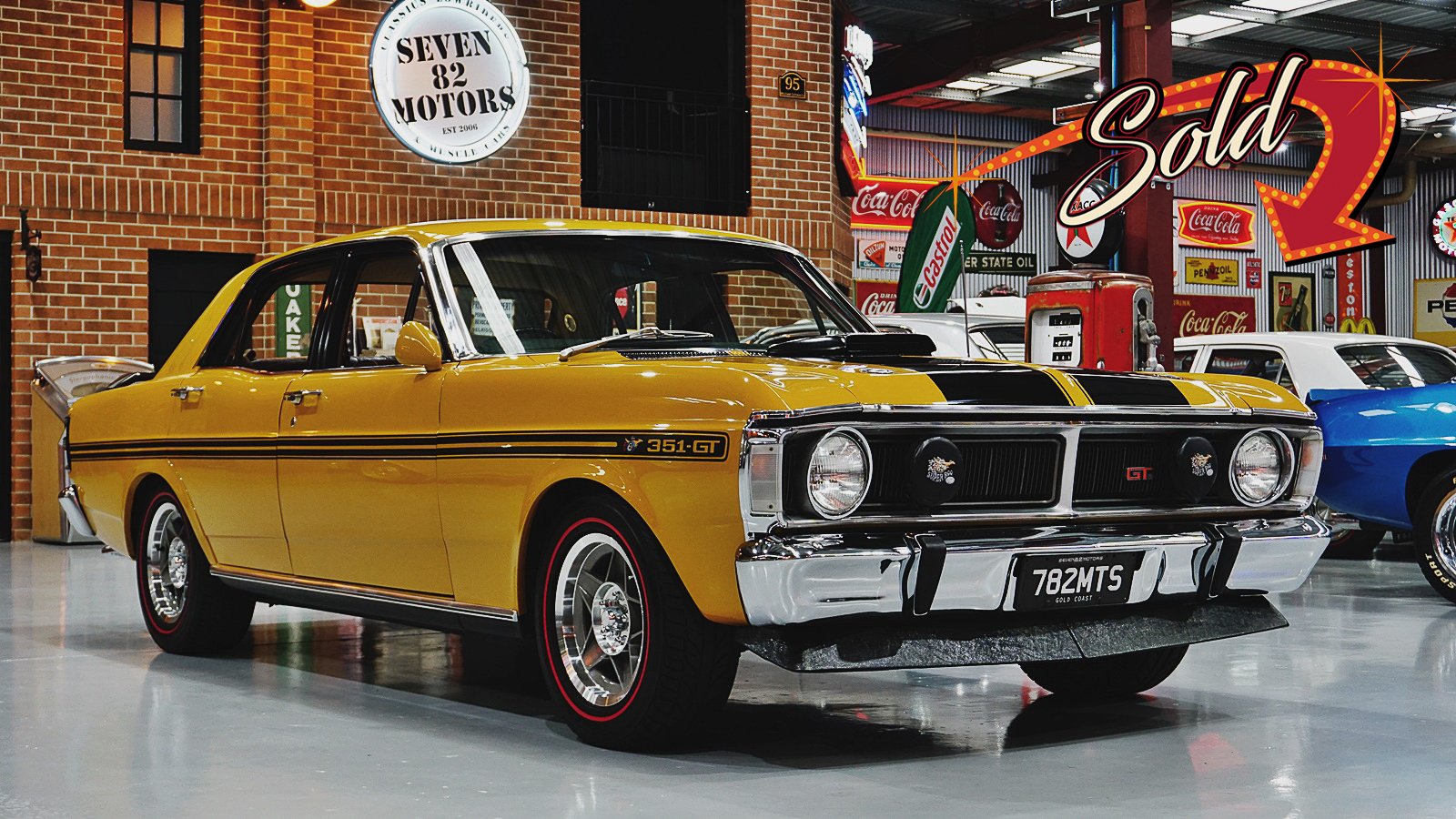
XY GTHO - Image Seven82Motors
FORD FALCON XY GTHO PHASE III (1971)
How a mighty V8 and other race-inspired changes turned the humble Ford Falcon into the fastest four-door car in the world, and created Australia’s most collectable muscle car.
It is hard to believe that over 50 years have passed since Australia produced the fastest four-door car in the world.
Ford’s Falcon GTHO Phase III was not only quick off the mark with a top speed of 230km/h, it could sustain extraordinary average speeds for hours over indifferent roads. In a country of uncluttered terrain, most of it without absolute speed limits, the Phase III could comfortably run at 180-200km/h for as long as fuel in the optional 164-litre tank held out.
The Phase III’s Cleveland 351 V8 was fed by a 780cfm Holley carburettor, and it breathed through bigger valves and an extractor exhaust. Power was estimated at 285kW with the engine’s monstrous 515Nm of torque making it ideal for galloping up and over the slopes of Australia’s legendary Mount Panorama race circuit.
Despite its pace and savage performance, the Phase III was not an uncompromising competition car. Inside was Fairmont style trim, with a woodgrain dash and quality carpet. Power steering wasn’t available, but contemporary tests confirmed the steering to be lighter than a standard XY GT. This was a muscle car you could use.
Values during the 1980s peaked at $100,000 before declining and remaining below six figures until a spike in demand sent values to a verified record price of $683,000.
Another decline followed before sustained growth from 2018-22 took the maximum paid for a road-spec Phase III to more than $1.1 million. The months since 2022 have seen quality cars fall below $800,000 and one that had been rebodied decades ago make just $395,000.
TIMELINE
1985 $60,000 1995 $65,000 2005 $185,000 2010 $445,000 2014 $370,000
2019 $880,000 2024 $785,000
INVESTMENT RATING 8.5/10
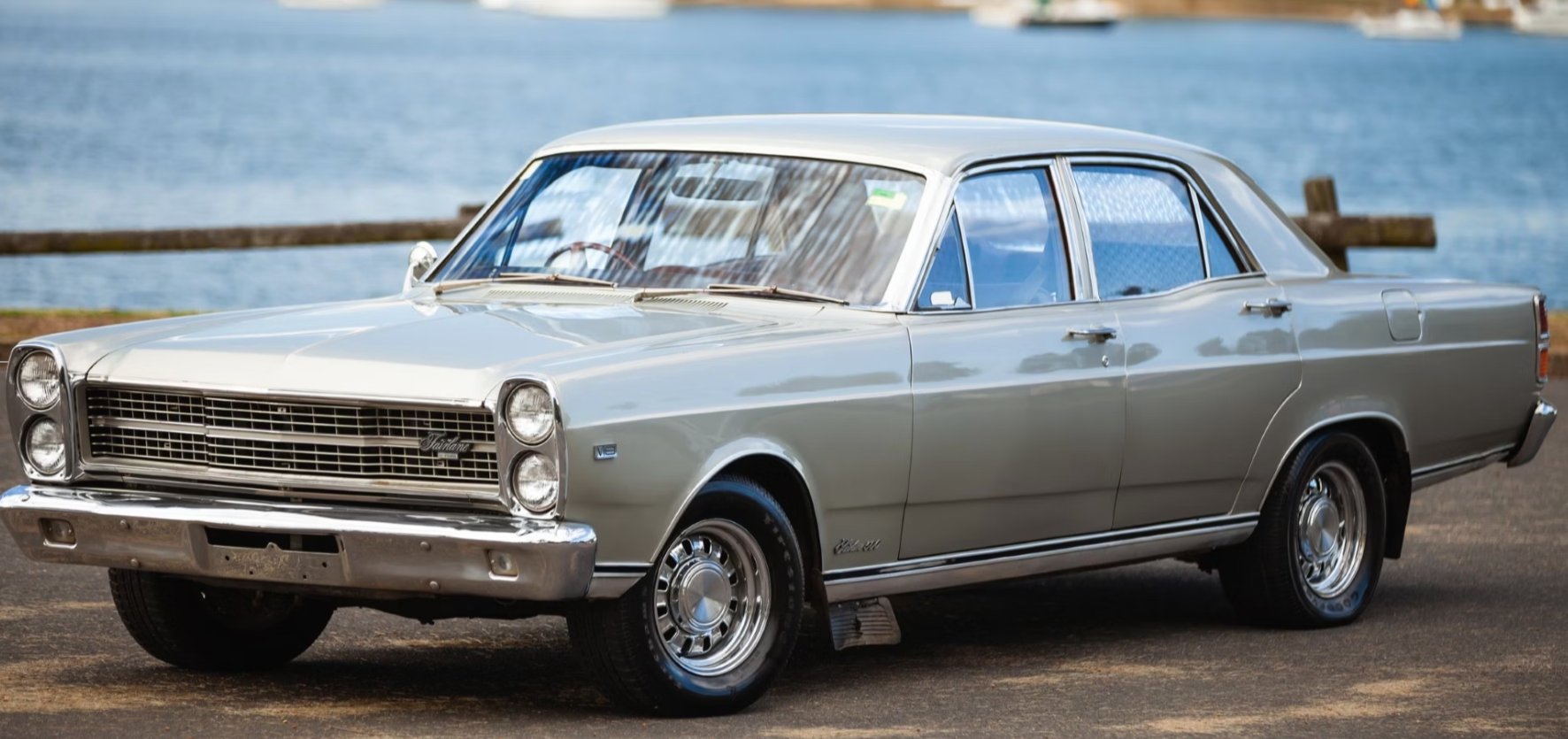
1970 Ford ZD Fairlane 500 - Image Collecting Cars
FORD FAIRLANE ZD 351 (1970-72)
How Ford’s ZD Fairlane adopted the Falcon’s 351 V8 to create a uniquely Australian long wheelbase hero car.
Changing a car's grille and hubcaps may not rate as massive update but for some reason these simple cosmetic tweaks helped the ZD Fairlane soar in popularity over the closely-related ZC version.
Both cars share vertically-stacked headlamps and a full-width grille, square-edged rear quarters that hint at a Lincoln heritage and wraparound tail-lamp clusters. Yet it is the ZD with its ‘egg crate’ grille that routinely commands more money in the classic market.
November 1970 saw the ZD version replacing the ZC which had appeared in 1969. ZD production would continue for 16 months until it was superseded by the reshaped ZF model.
Fairlanes were seen as tough and were a favourite of buyers who travelled big distances in rural areas. These Fords used conventional coil front/leaf rear springs with heavy-duty shock absorbers and a setup biased more towards smooth ride than pin-sharp handling.
Any ZD supplied with a V8 engine was required to have disc front brakes and 351 versions were also supplied with ER70H14 radial ply tyres rated to 210km/h.
The ZD was supplied with reclining bucket seats and a centre console, unless the optional front bench seat was specified. The interior also featured quality carpets, a plasti-wood dash trim and multiple courtesy lights. Power steering was standard with the V8 and dealer-fit air-conditioning a popular option.
Accompanying the switch from ZC to ZD was an expanded range of paint colours plus extras including power windows, a sunroof and air-conditioning.
Survival rates from a total of 12,700 ZD Fairlanes built remain strong. Prices have climbed steadily over several decades but seem unlikely to become extreme, even for cars with the K Code 351 engine.
TIMELINE
1985 N/A 1995 $9000 2005 $12,500 2010 $20,000 2014 $26,000 2019
$45,000 2024 $55,000
INVESTMENT RATING 6.5/10
-2560x1707.jpg)
1972 Ford Falcon XA GT RPO 83 - Image Ford Falcon GT Club
Ford Falcon XA GT RPO83 SEDAN (1973)
How Ford used leftover high-performance parts intended for its stillborn Phase IV Falcon to create the RPO83, a Frankenstein-like sedan and coupe that is at the centre of some of the greatest myths and legends of any Australian vehicle.
In 1972, Ford Australia had a brand new XA model with lots of Aussie engineering underpinning its design and a shed full of parts intended for a version of the XA GT that would never race due to political interference.
The XA GTHO Phase IV is one of the world’s rarest cars. Four were built, three survive and any that come up for sale will sell for multiple millions.
Sitting off to one side of the Phase IV is a model designated RPO83 which has a story that’s almost as interesting.
To clear parts intended for its prematurely deleted Phase IV, Ford Australia announced a limited run of XA Falcon GTs, sedans and hardtops, and designated Regular Production Option 83.
Over the 51 years since these cars were manufactured, millions of words have been written about their history and provenance, leading to numerous myths and quite a few legends being perpetuated.
Elements of the RPO83 story that can be verified include officially sanctioned production of 131 sedans and 121 Hardtops. All had 780cfm Holley four-barrel carburettors and uprated cooling systems. Some had winged sumps to improve oil pickup when cornering, some acquired heavier driveshafts and a very small number were fitted with rear wheel disc brakes which would become standard on the later XB GT.
Prices paid for these cars can at times become extreme, as was seen when a verified RPO83 Hardtop (nicknamed the Chicken Coupe) – due to it having been left to rot for 30 years in rural Queensland – was sent to auction where it made more than $300,000. Sedans in far better condition than the coupe have since been advertised at less than $270,000.
TIMELINE
1985 N/A 1995 $18,500 2005 $48,000 2010 $105,000 2014 $80,000 2019
$185,000 2024 $270,000
INVESTMENT RATING 8/10
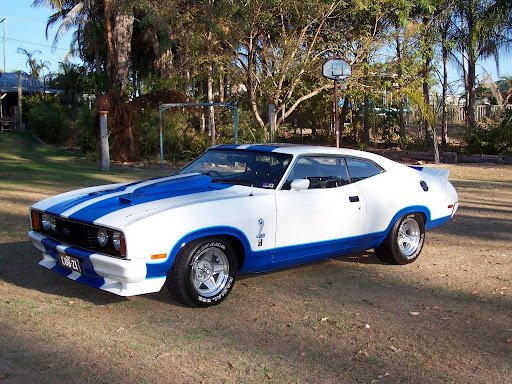
XC Cobra Coupe - Image Falcon Cobra Club
FORD FALCON XC COBRA 5.8 (1978)
How a paint-scheme inspired by legendary US racer Carroll Shelby’s GT350 Mustangs helped Ford Australia clear a paddock full of two-door Falcon body shells and created the limited-edition XC Cobra.
Creative thinking made Henry Ford a master of automotive marketing and those qualities obviously filtered through to his grandson, Edsel Ford II.
With paddocks full of two-door Falcon body shells to shift, Edsel during a sojourn at the helm of Ford Australia suggested they be painted in the white-with-blue-stripe livery that characterised Carroll Shelby’s GT350 Mustangs and marketed as a limited-edition XC Cobra.
The ploy worked and 400 leftover shells not only sold out quickly but would within a few years become hot items with enthusiastic Ford fans.
Half of the Cobras came with 5.8-litre engines, the rest with 4.9-litres, but it is the first 30 that generate the greatest interest and collector-market money.
These ‘Option 97’ cars were equipped specifically for racing and are most easily identified by their rear-facing bonnet scoop and all-black Scheel seats.
They also had the metalwork inside the rear arches reshaped so wider wheels with huge racing rubber would fit without fouling.
Option 97 versions can exceed $400,000 but very rarely appear for sale. Four-speed 5.8-litre Cobras of lesser specification have flirted with $250,000 but recent prices have diminished.
All Cobras came with four-wheel disc brakes and five-spoke Globe wheels like those that appeared years earlier on Ford’s 1972 Bathurst contenders.
Newly introduced emission controls saw the engine’s power diminish from 224kW in XA GT form to 162kW in the Cobra. Four-speed, 5.8-litre cars when road tested were still able to reach 204km/h.
TIMELINE
1985 $22,000 1995 $15,000 2005 $35,000 2010 $70,000 2014 $105,000
2019 $200,000 2024 $225,000
INVESTMENT RATING 7/10
-1599x1066.jpg)
Ford Fairmont XE ESP - Image WikiMedia
FORD FALCON XE FAIRMONT ESP 5.8 (1982)
These Euro-inspired Sports Pack models introduced a new level of refinement to performance Falcons but also drew down the curtain on Ford’s Australian-made V8.
The European Sports Pack Falcon and Fairmont were Ford’s response to Holden’s VB SL/E Commodore. These Fords were heavier and more cumbersome than the compact Holden but could be specified with a range of engines including the 5.8-litre V8 that had been fitted to local Ford products since the 1960s.
Hampered by 1560kg and a fuel-saving 2.92:1 final drive, the 149kW 5.8-litre couldn’t match the performance of Holden’s smaller 5.0-litre V8 but did manage a respectable 16-second time for the standing 400 metres.
What owners of early GTs trading up to an XE didn’t miss was the heart-stopping brake fade that came when rear drums succumbed to heat stress. Concerns for safety saw all ESPs running four-disc brakes behind stylish alloy wheels.
The XE ESP appeared in March 1982 and was built for just eight months before supplies of the locally-manufactured V8 dried up. Most of the cars had 4.9-litre engines and automatic transmission but there were 178 of the four-speed 5.8-litre version built.
The ESP 5.8 wasn’t brutish in nature like the old GTs, nor was it intended to be. The suspension was modified from XD format to accommodate Bilstein dampers and at the rear a Watts Link did its best to keep the live-axle in check.
XE ESPs featured duo-tone paint, Scheel sports seats and ‘Snowflake’ wheels with 60-Series tyres. Originally listed at $18,450 they took the best part of 30 years to claw back their original cost, but Ford’s decision to end local production in 2016 has seen their appeal increase.
TIMELINE
1985 N/A 1995 $18,000 2005 $15,500 2010 $21,500 2014 $35,000 2019
$110,000 2024 $115,000
INVESTMENT RATING 6/10
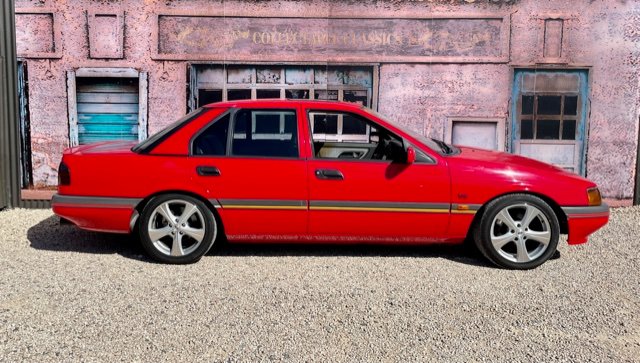
Ford Falcon EB XR8 - Image Collectable Classics
FORD EBII FALCON S-XR8 (1992-93)8 MAKES A COMEBACK
How the Ford V8 made a comeback beneath the bonnet of the EBII Falcon S-XR8.
A decade after declaring the V8 dead, Ford Australia ordered several serves of humble pie and announced ‘The V8 Is Back’ in the shape of a Falcon XR8.
In 1991 Ford needed something big to save its bacon. The EA Falcon had been a disaster and the model that followed it had to be something special.
In six-cylinder 4.0-litre form, the EB range hadn’t done badly but needed an edge that came in the shape of a reinvented V8.
Ford’s XR8 was a derivative of the S Pack which had been available since the days of the Falcon XD. This time, though, the extra features included more than stripy seat trim, drilled wheels and stripes.
Ford’s revived V8 was fuel-injected and capable of meeting US emission regulations, which at the time were much tougher than Australia’s. Output was a conservative 165kW, due in part to Australia’s 91 Octane unleaded fuel and Ford’s desire to avoid saddling buyers with the cost of Premium.
To maximise whatever performance was available, Ford offered an up-rated version of its T-5 manual transmission, which helped the S-XR8 reach 100km/h in 7.4 seconds.
More important to people who appreciated the long-distance cruising abilities of a Ford V8 were improvements to the suspension and braking systems
Not many years ago, values remained low and neglected examples of this important model were disappearing. In the years since Ford stopped manufacturing in Australia though, the value of properly preserved EBII XR8s has soared and likely will continue to do so.
TIMELINE
1985 N/A 1995 N/A 2005 $8000 2010 $6700 2014 $9500 2019 $17,000
2024 $30,000
INVESTMENT RATING 6/10
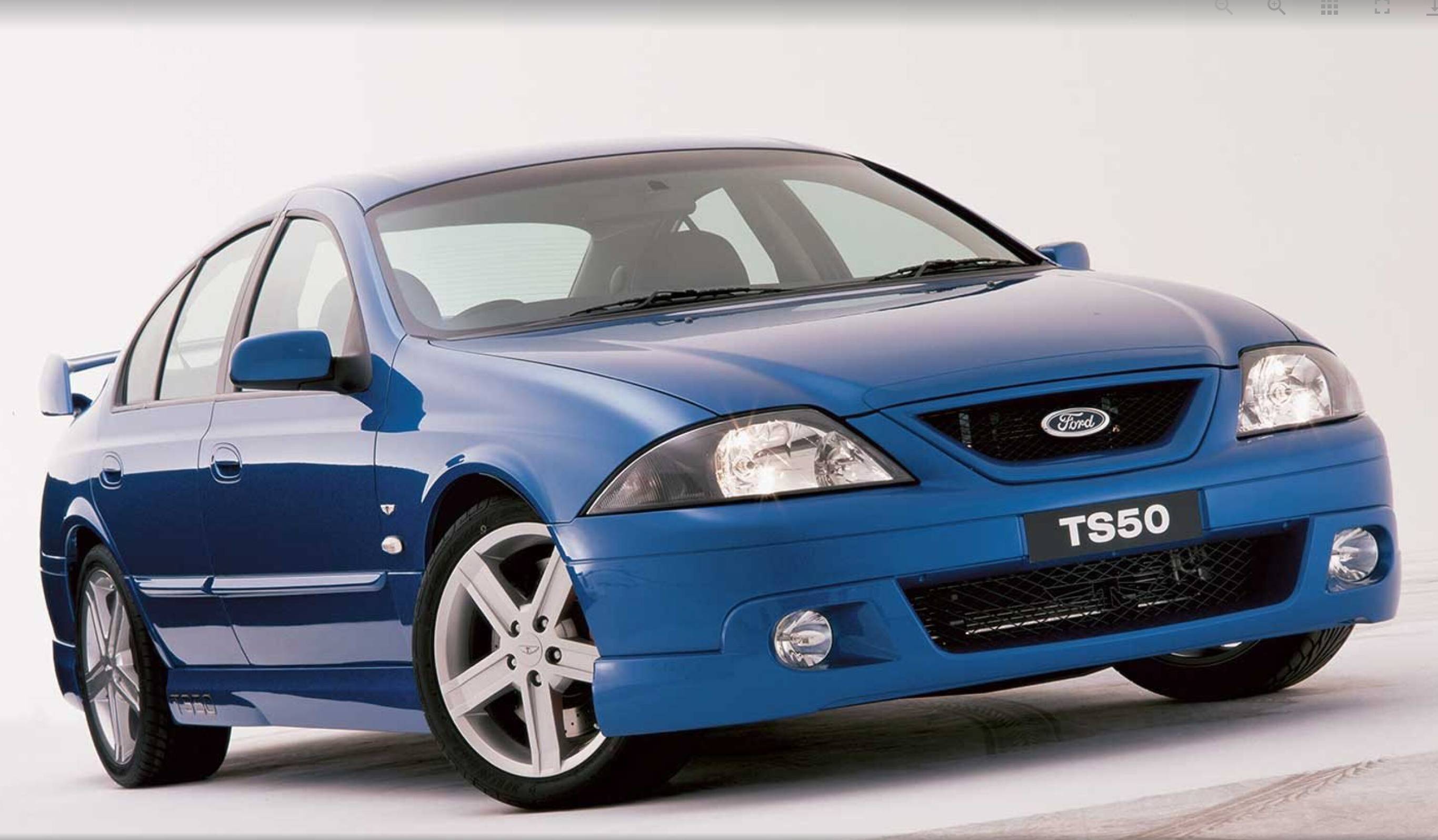
FPV Tickford AUIII TE50 - Image FPV
TICKFORD AUIII TE50 5.6 (2002)
How’s Ford’s Tickford performance partner created a unique Aussie V8 with the world’s first Windsor V8 Stroker for the Falcon AUIII TE50
In the battle for dominance of Australia’s 1990s performance car market, Ford’s Tickford subsidiary was being seriously thrashed by Holden Special Vehicles.
Ford’s only available V8 was the dependable but undersized Windsor 5.0-litre, sent into an unfair battle against HSV’s equally dependable but larger 5.7-litre Gen III.
Ford needed a motor to match the General Motors’ unit in capacity and output but found nothing to suit in North America. Tickford Engineering came to the rescue, taking a standard cast iron block engineers extended the stroke from 76.2mm to 86.4mm, added a redesigned crankshaft and connecting rods, and built the world’s first Windsor V8 Stroker.
The heads retained two valves per cylinder but they were larger with strengthened valve springs, while higher lift and roller rockers were added to maintain reliability at high engine speeds.
With a modified exhaust and 50 percent improvement in fuel pressure, power from the Stroker reached 250kW with 500Nm of torque. Acceleration improved as well, with the TE50’s time for 0-400m a claimed 14 seconds.
Seats came clad in duo-tone leather with a matching Momo steering wheel, and the dash featured white-faced dials to create some character. Wheels grew to 18-inch units but looked smaller than this due to being shrouded in the TE50’s convoluted body kit.
Despite its performance and scarcity, the 5.6-litre Tickford failed to stir the market or even excite Ford enthusiasts. Just 202 TE50s were built at a basic price of $57,940 and within a few years that value had plunged by around 60 percent.
There it would remain for the better part of 15 years before struggling back past $50,000. Today it’s still possible to buy a good 5.6-litre TE50 for less than its original price.
TIMELINE
1985 N/A 1995 N/A 2005 $26,000 2010 $22,000 2014 $26,000 2019 $47,500
2024 $52,000
INVESTMENT RATING: 6/10
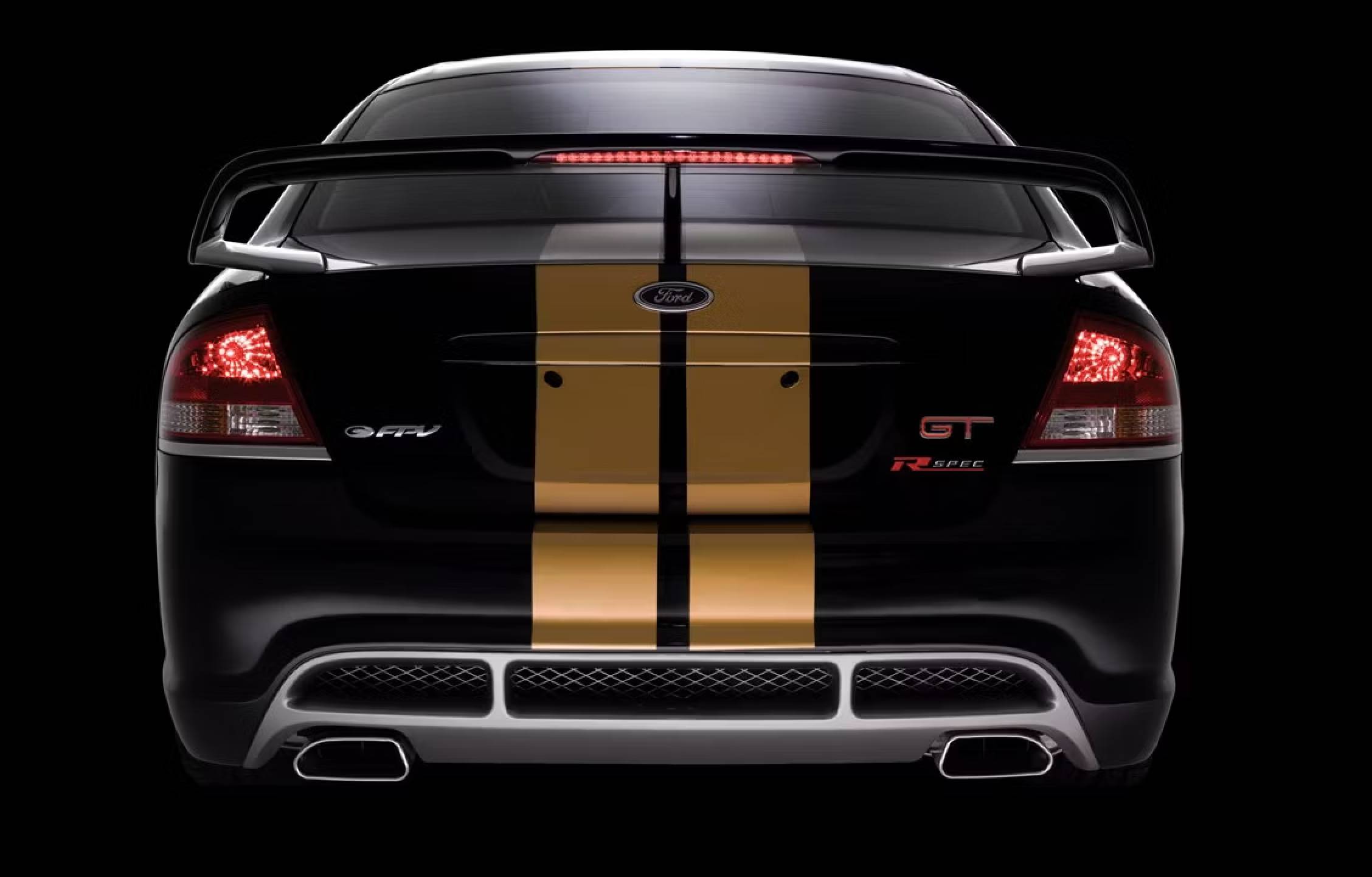
2007 FPV Falcon GT 40th Anniversary - Image FPV
FPV BFII 40 TH ANNIVERSARY (2007)
How Ford finally kicked an anniversary goal with the black-and-gold liveried and Boss V8 powered FPV BFII 40th edition.
Ford had a poor track record when it came to producing commemorative Falcon GTs. Contrived collectibles like the EB-based 25th Anniversary GT and 30th Anniversary EL are only now managing to recoup their initial selling prices and people viewing the BFII based 40th Anniversary cars must have suffered twinges of trepidation.
Thankfully, the black cars with their distinctive gold accents and 290kW Boss V8 have for almost their entire lifespan managed to keep those gold-striped nostrils ahead of the depreciation curve, and even make a few bucks along the way for doting owners.
Just 200 of these cars were built, with 25 of them packed off to New Zealand, leaving dedicated local collectors to snare most of the rest. When one does appear in the retail market it almost invariably shows very low kilometres.
When new the basic FPV 40th Anniversary cost the buyer $65,110 before on-roads. A six-speed manual or six-speed automatic transmission were at buyer discretion but adding the optional Brembo brake package pushed the sticker price past $72,000 and reduced the chances of short-term resale gain.
Although the Anniversary GT is a dedicated collector vehicle, they offer a decent driving experience and cars showing 70-100,000 kilometres do appear in the market.
These are perfect for the enthusiast who wants to turn heads on a club cruise or at a track day and such cars typically sell below $60,000.
TIMELINE
1985 N/A 1995 N/A 2005 N/A 2010 $55,000 2014 $62,000 2019 $74,500
2024 $84,500
INVESTMENT RATING 7/10
Cliff Chambers

Get The Latest
Sign up for the latest in retro rides, from stories of restoration to community happenings.
 '1972â73 1-1024x675.jpg)
